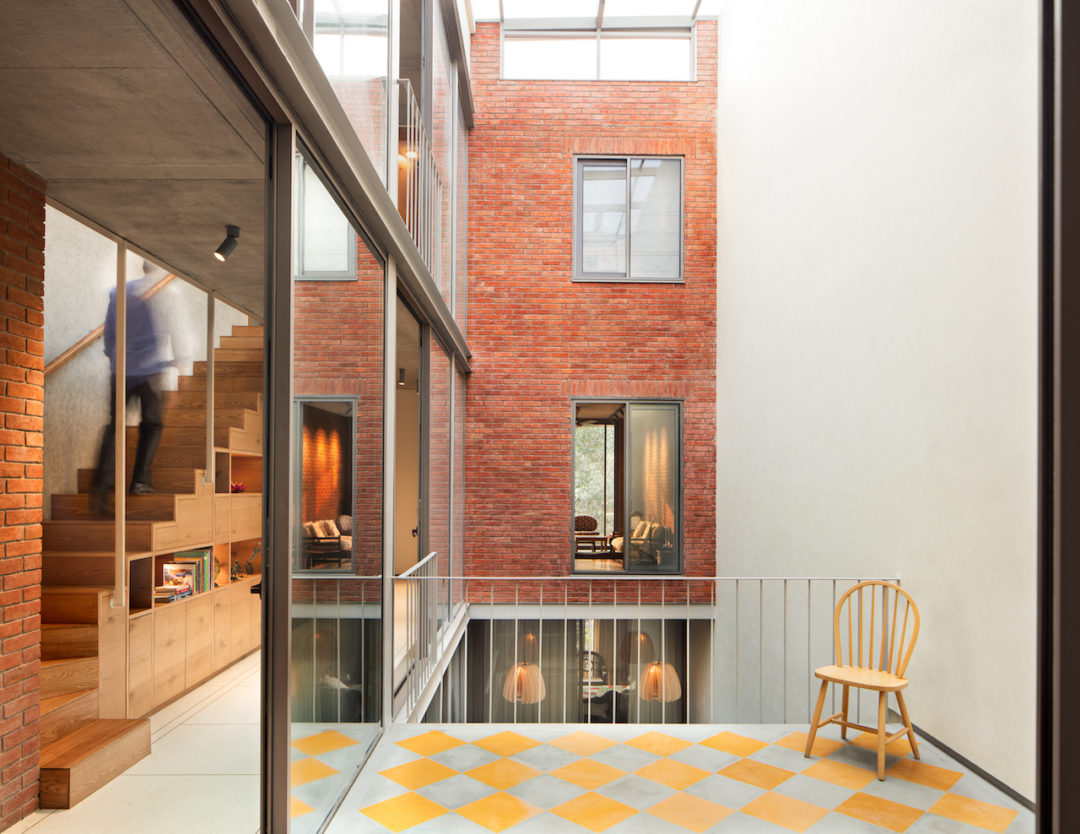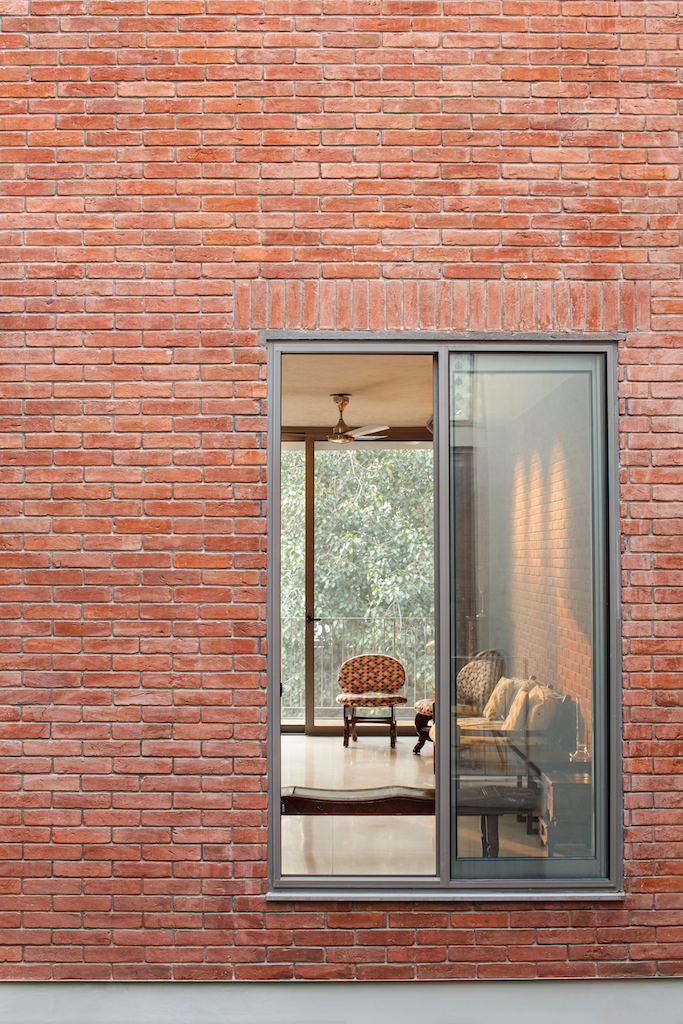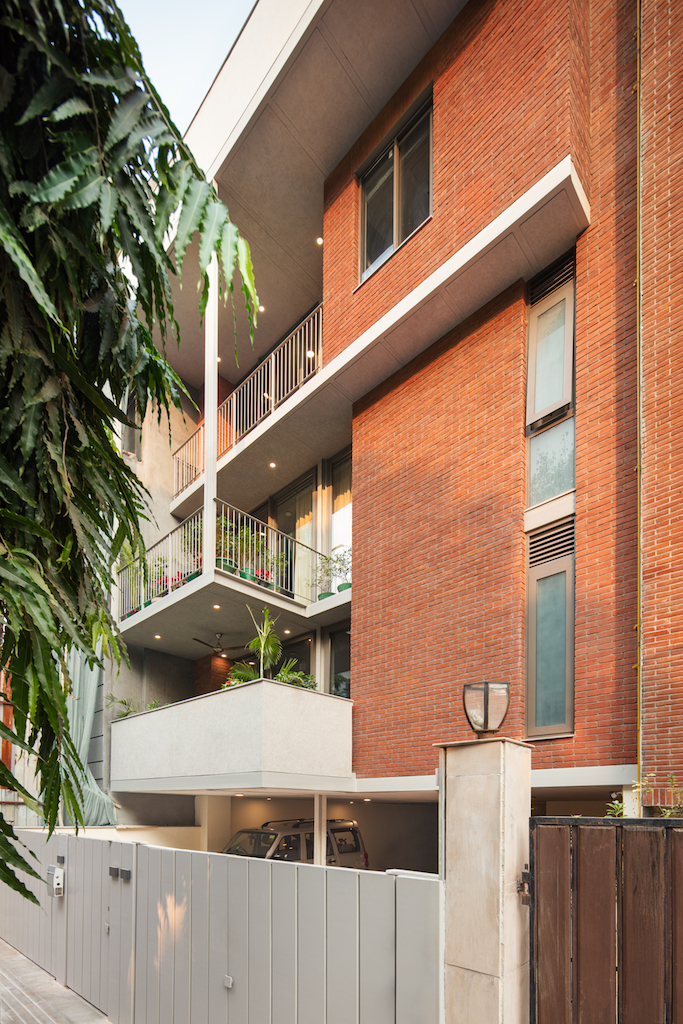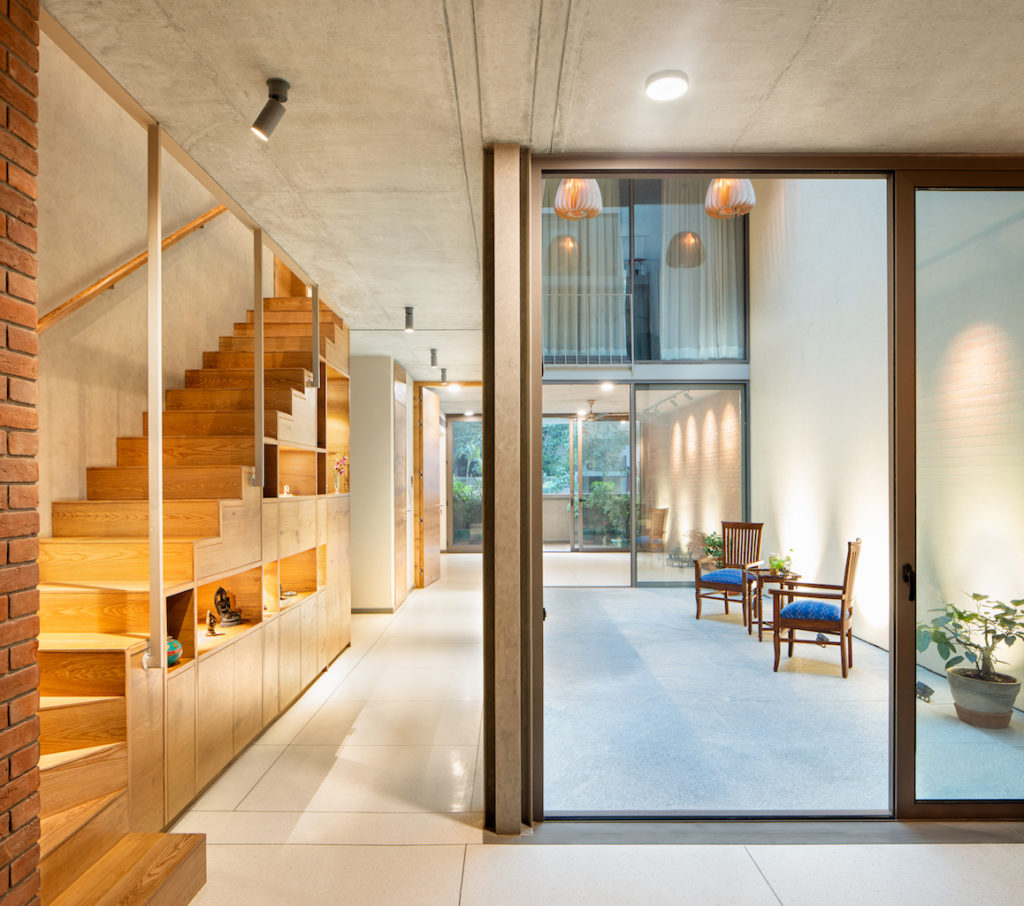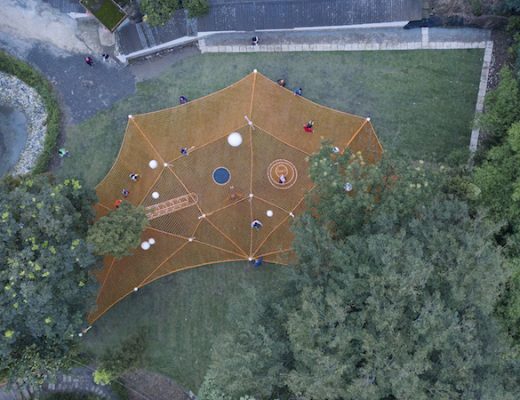A compact residence in a dense urban locality looks inwards for an elevated living experience
Daylight, ventilation, interconnectedness and privacy inform the design of this house by Studio Lotus in a dense part of the Panchsheel Enclave neighbourhood in New Delhi. Sited on a relatively small plot of 200m2 that is open on one side, Studio Lotus designed this house as two interconnected duplex apartments for an extended family of six – the client, his wife and two children in one apartment, and his elderly parents in the second apartment.
The west-facing plot is 9m x 24m deep and is enclosed by buildings on three sides with no setbacks, with the narrower 9m face opening towards an 8m wide feeder road. The team took on the challenge of creating an airy, day-lit sanctuary that would remain naturally illuminated, with all rooms cross-ventilated throughout the day despite the restrictive site conditions. There was also the desire to create a strong visual connection between the separate units to facilitate a sense of connected living for the two different family units.
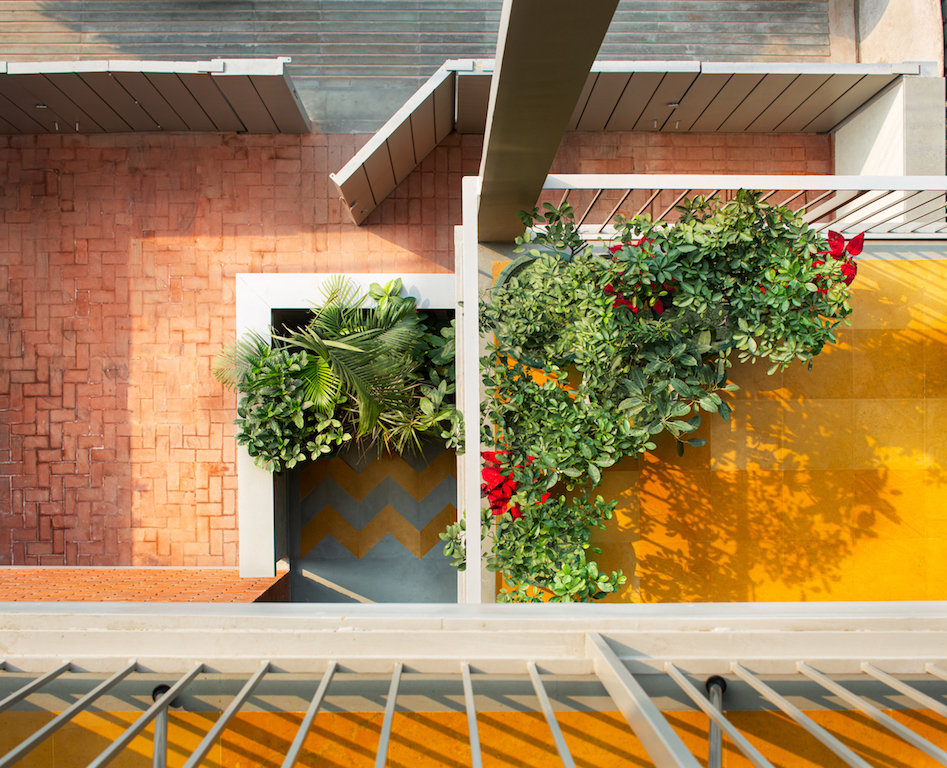
This became the starting point for the design exercise that evolved into a series of vertically stacked volumes – the four-storey home is expressed as two staggered duplexes around a central courtyard and a small rear courtyard that is staggered in section, allowing light and ventilation deep into the lower floors.
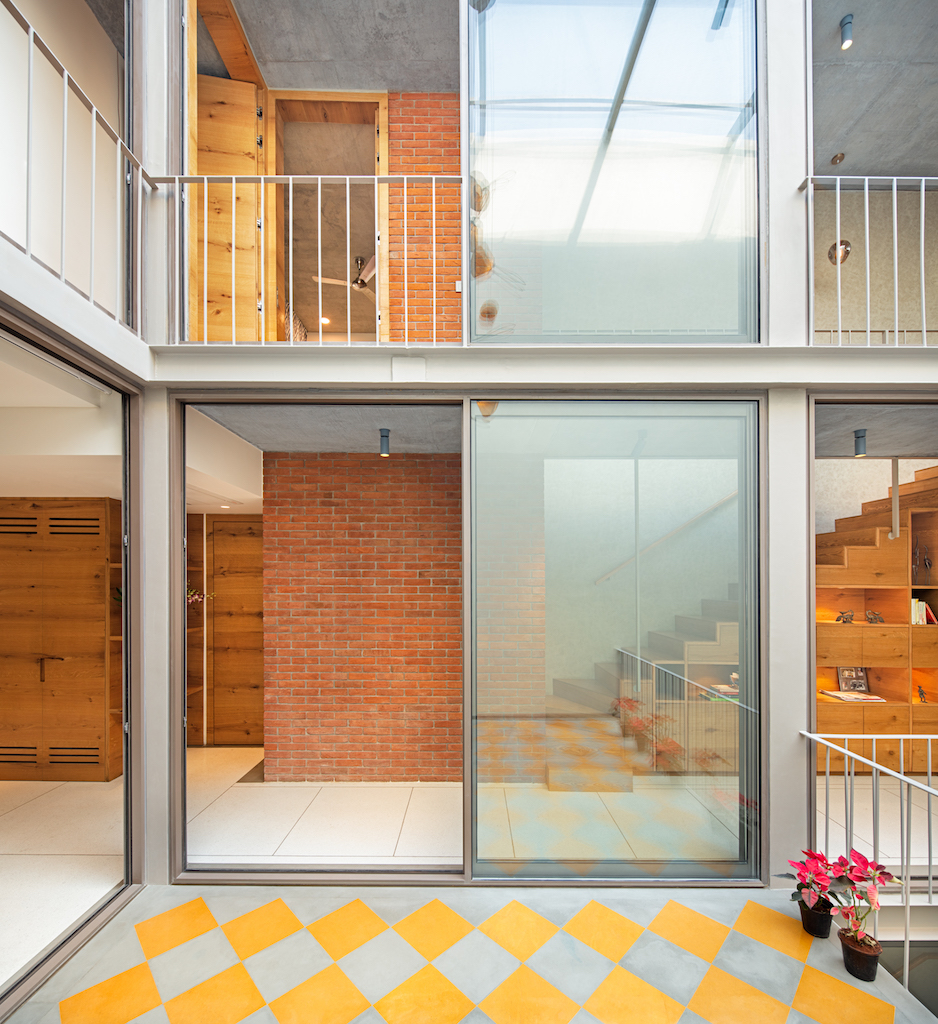
The street-facing west façade, the offset central courtyard, and the diagonally placed third court form the three vertical spines around which all the rooms find their rightful place. The west front comprises the living rooms and the master bedrooms of the two units, opening through the courtyard into the rear volume, which houses the dining and the kitchen on the lower floors and bedrooms on the upper floors respectively. Multiple balconies and walkways connect these living spaces, creating a characteristic staggering of the floor plates that articulates the internal courtyard.
The primary central courtyard has been designed as a triple-height light coloured wall to act as a reflector for the south light into the internal spaces that are staggered around it. The courtyard is also flanked by verandahs that are outdoor extensions to life within the house and a place for different family units to be able to chat across from the space they occupy, like in an old-fashioned aangan (courtyard in Hindi). The intervention serves to activate the entire vertical volume inside with fresh air and ambient lighting.
To further aid ventilation and diffusion of natural light in the living spaces, the linear stairwell connecting all floors has been placed along the southern façade, owing to it receiving the lowest levels of illumination and a small sky-lit courtyard has been created at the south-east corner of the site.
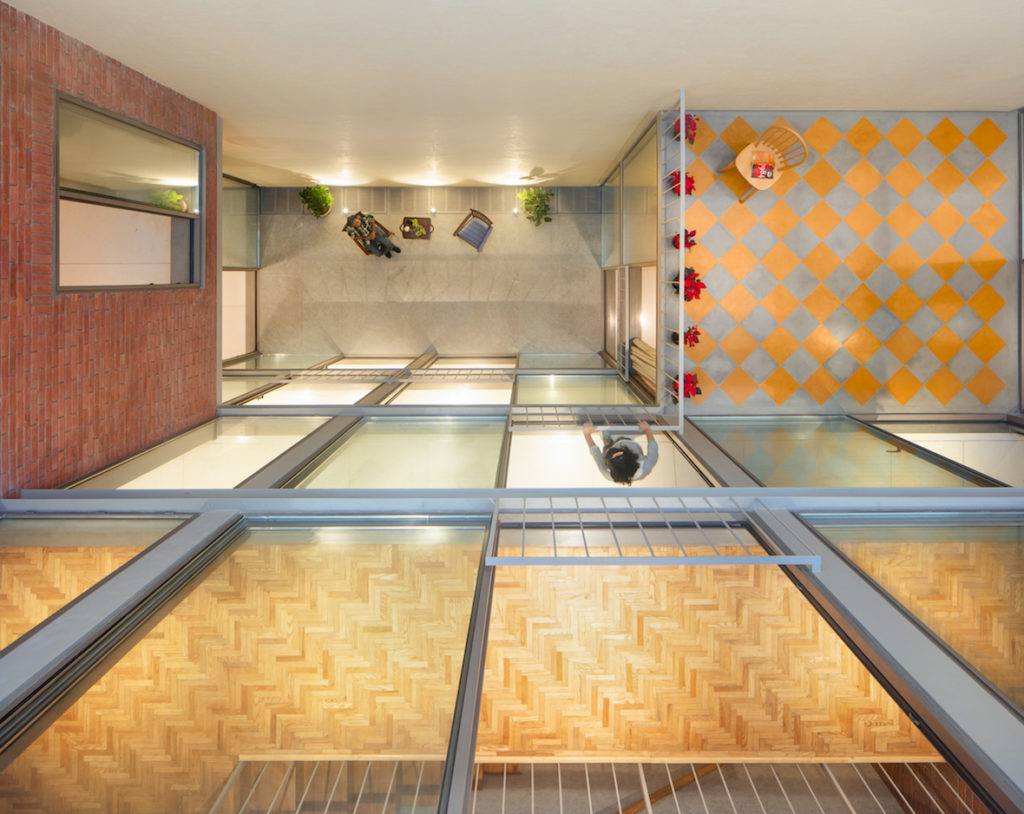
Views of the tree-lined street have enabled the team to design the external glazing in accordance with the ‘split’ within the house – the north-western facade has a glazed surface, while the south-western face features exposed brickwork.
To maximise the heights within this tight space, structural engineer BL Manjunath came up with an innovative hybrid structural system, comprising a modular metal grid of beams and columns with concrete slabs poured within the frame, accommodating the beams within the slab. This maximises heights and creates seamless sightlines with no visual obstruction and exposes the structural system — making this small home a spartan yet well-crafted expression of its materials.
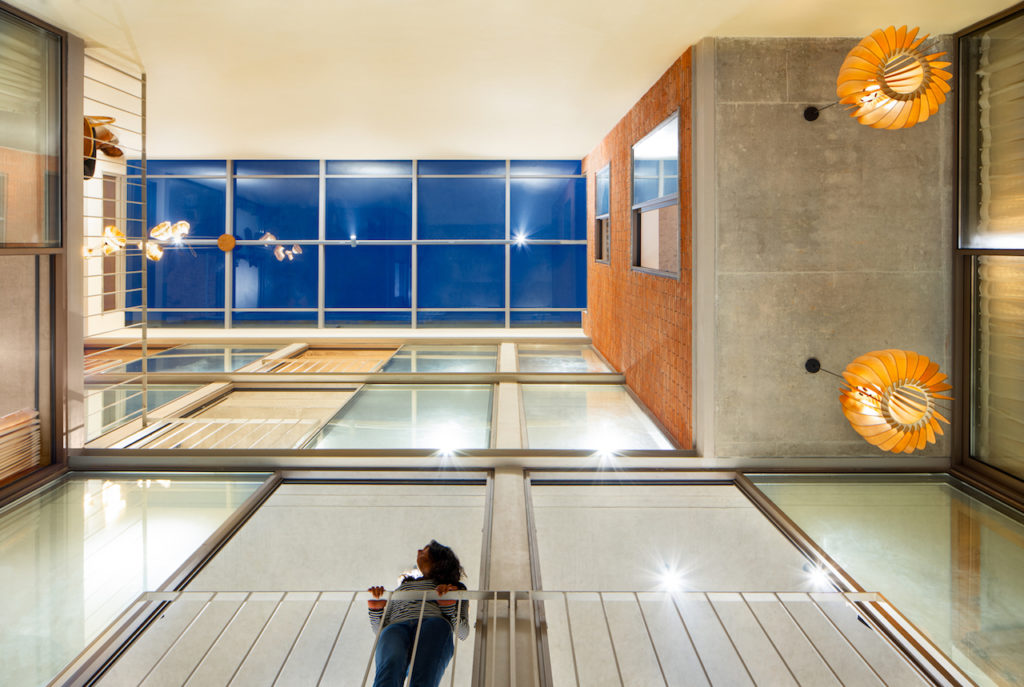
The design employs an earthy material palette to elevate the tactile experience of the shell complementing the open, airy spaces. White plastered walls, exposed metalwork and white terrazzo flooring populate this shell, facilitating the overarching intent of crafting light and roomy volumes.
Subverting the archetype of poorly-lit row-houses characteristic of such dense neighbourhoods, the design of Stacked House proposes an alternative morphology for residential developments in Indian cities – one that borrows from traditional building patterns as much as it does from modern technological innovation.
Studio Lotus, a multidisciplinary design practice founded in 2002, is one of India’s leading award-winning firms, with Ambrish Arora, Ankur Choksi, Sidhartha Talwar, Pankhuri Goel and Asha Sairam at the helm as principal architects.
Project details:
- Typology: Residential (Private Home)
- Name of Project: Stacked House
- Location: New Delhi, India
- Design Firm: Studio Lotus
- Design Team Studio Lotus: Ambrish Arora, Sidhartha Talwar, Anusha Pulapaka, Harshvardhan Kumawat
- Site Area: 220m2 /2370ft2
- Built-Up Area: 10,000ft2
- Year of completion: 2019
- Photographer: Andre J Fanthome
- Lighting design consultant: Abhishek Khandelwal
- Structural consultant: Manjunath BL
- MEP consultant: Vineet Lochan Gupta
- Interior contractor: Antrix Construction Pvt. Ltd. – Interior finishing
- Civil works: Baleshwar Mondal
- Metalworks: DG Enterprises
- Interiors: Antrix Construction
- Structural: Baleshwar Mondal
See the full image gallery here:
You might also like:
Studio Symbiosis Architects propose giant urban air purifiers to tackle pollution problem in Delhi
Sustainable house by Wallmakers in southern India mimics remote Himalayan cabin

